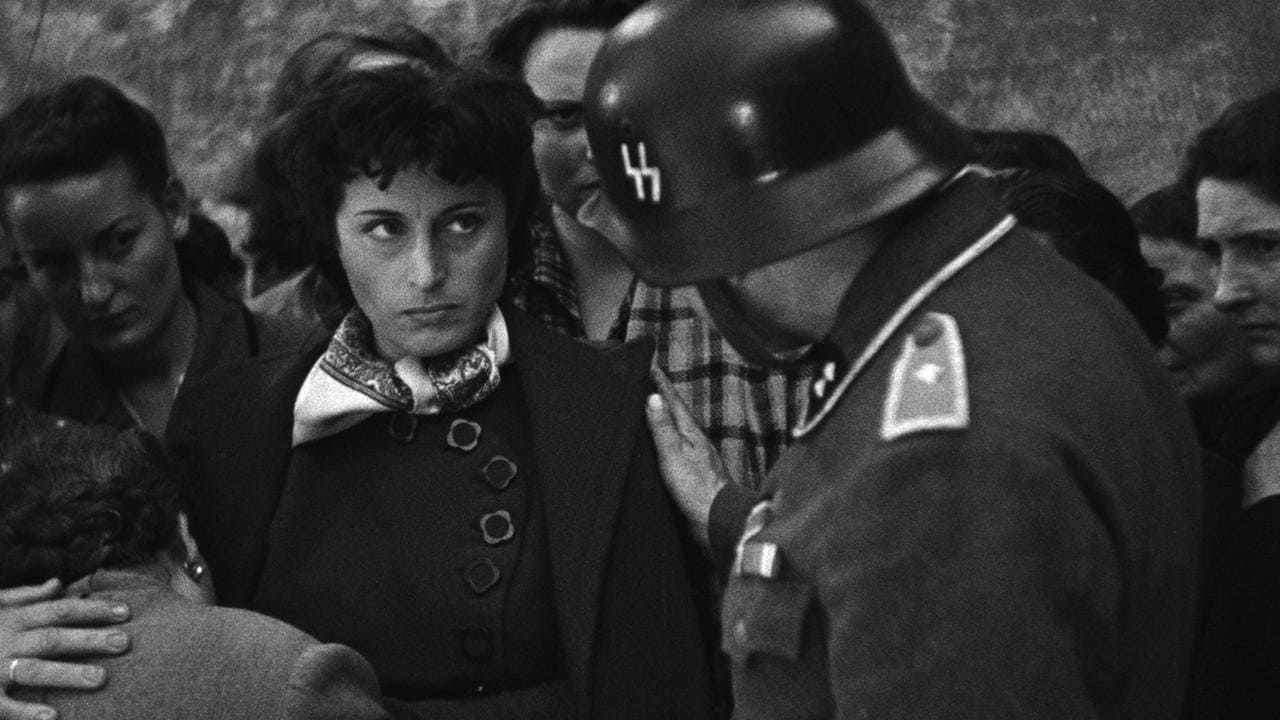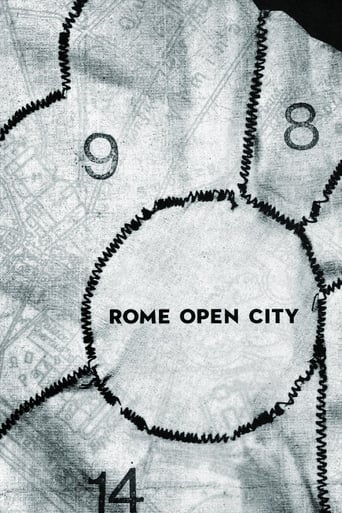SpuffyWeb
Sadly Over-hyped
NekoHomey
Purely Joyful Movie!
Billie Morin
This movie feels like it was made purely to piss off people who want good shows
Yash Wade
Close shines in drama with strong language, adult themes.
gavin6942
The location: Nazi occupied Rome. As Rome is classified an open city, most Romans can wander the streets without fear of the city being bombed or them being killed in the process. But life for Romans is still difficult with the Nazi occupation as there is a curfew, basic foods are rationed, and the Nazis are still searching for those working for the resistance and will go to any length to quash those in the resistance and anyone providing them with assistance.What a strange film, made in 1945 when World War II was anything but a memory. In fact, it was so recent that allegedly real German POWs were used as actors, and the man credited as the editor was actually in prison at the time. That is wild.Sadly, the version I watched was of a fairly low quality. I suspect most (if not all) releases are. Is this fixable? Can they do a 4K scan of the negative (or whatever process is popular these days)? If so, this is a film that truly deserves it.
preppy-3
This takes place during WW2 when the Nazis controlled Italy. A resistance fighter named Giorgio (Marcello Pagliero) is tracked down by the Nazis. He goes to a friend named Francesco (Franceso Grandjacquel) to get out of Italy. With the help of priest Don Pietro Pellegrini (Aldo Fabrizi) he tries to help.I can't tell anymore without ruining the movie. I'm not a fan of neo-Realsim in movies (I HATED "The Bicycle Thief") but I have to admit I loved this movie. It was quick-moving and mostly well-acted by an amateur cast. For the 1940s it was also pretty explicit--there's a German lesbian character, tortures, bombings and a woman (a main character) is shot down in cold blood (that was never done back then). It was shot in documentary style which makes it seem more realistic. The only debits were the bad music and a German official who acts like he came out of a Hollywood movie about Germans. Still, this is a classic and well worth seeing. I give it an 8.
wes-connors
In Axis-controlled Rome, a strong-willed priest Aldo Fabrizi (as Pietro Pellegrini) plans to officiate the marriage of matronly and pregnant Anna Magnani (as Pina) while assisting a resistance leader Marcello Pagliero (as Giorgio Manfredi) hunted by the Nazis. This neo-realistic classic has shown its seams, over the years; in my most recent viewing, the soundtrack music, while not bad in itself, would have added much by its exclusion. Still, this is a powerful drama, with chilling last scenes involving the principal characters that do not diminish in their intensity. This was widely considered the best foreign language film of the year, by which time director Roberto Rossellini had released the similarly acclaimed "Paisan" (1946).******** Roma, citta aperta (9/27/45) Roberto Rossellini ~ Aldo Fabrizi, Anna Magnani, Marcello Pagliero, Maria Michi
Ilpo Hirvonen
After WWII filmmakers tried to find their ways to deal with history. A British director Humphrey Jennings made evocative documentaries about WWII and Americans made more romantic features about the war from their perspective. Here Italy comes in. The nation which had just got away from the chains of fascist management. Today this postwar Italian movement is known as neorealism, which is recognized from its reportage-like characterization, national personal gallery and dramatization of the resistance. But it cannot only be described by these external aesthetic features. The starting points in Italian neorealism were in the anti-fascist battle and the Italian liberalization.The people who formed neorealism, Vittorio De Sica, Luchino Visconti, Roberto Rosselini and many others, wanted to bring Italy back to the midst of other nations. They wanted to find their own way of dealing with the history. Narratively the way was the documentary, reportage-like characterization. The shady cinematography combined with the daring description of Italians. Even today Open City is praised as the symbol of the resistance and the picture of the character played by Anna Magnani was actually published in a stamp after 50 years in Italy. Her character became the symbol of the resistance.Film historians often tend to argue, who actually started neorealism. In 1943 Luchino Visconti directed Ossessione, which at least aesthetically looks like the work of a neorealist. Which probably is true, but neorealism is seen as a postwar genre and since the WWII ended in 1945, the statement that Ossessione would've began the movement is weak. But it most certainly did give it a start and the ingredients. Some also state that De Sica's Bicycle Thieves (1948) is the greatest film of neorealism. I think that Bicycle Thieves is a masterpiece, but when defining what neorealism actually is Rosselini's reportage-like characterization works better than De Sica's lyricism. Open City is the first film, which finely defined neorealism.Open City is perhaps the most personal film by Rosselini. It was written under the watchful eyes of the fascist management, where the risk of getting arrested was always near. This made Rosselini and the other screenwriter Sergio Amidei feel like they were a part of the resistance - what would be greater than to write your own page to history? When young Federico Fellini (today the most famous of the team) joined the crew, they started to film it with an incredibly low budget. Roberto Rosselini has said: "Open City achieved more than all the efforts of the Italian Foreign Ministry put together. It helped Italy to find its own place among other nations." Rome Open City is a picture of its own time, it's a landmark in the history of cinema. In both the WWII genre and in Italian neorealism, which influenced the Japanese postwar cinema (Kurosawa, Ichikawa) and the Nouvelle Vague - French New Wave (Godard, Truffaut, Rivette, Chabrol & Rohmer). It's a cry for democracy and freedom. It is a hopeful picture of Italy free from the chains of the fascists. It meant a totally new way of dealing with the history. Open City was a very ambitious film, but it succeed in all of its intentions. It is still a timeless masterpiece.

